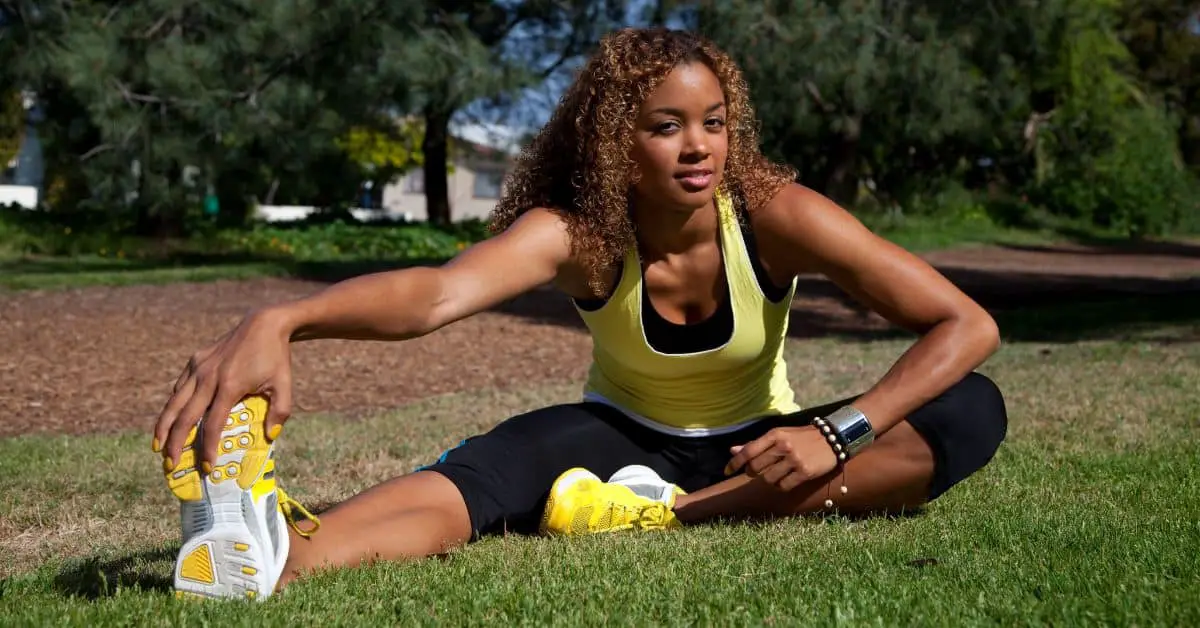Top 10 Key Advantages Of Exercising Regularly
Consistently engaging in physical activity can do wonders for your energy levels and elevate your mood.
Plus, it’s linked to numerous impressive health perks, such as a lower risk of chronic ailments.
Exercise encompasses any action that activates your muscles and compels your body to expend calories.
There’s a diverse array of fitness pursuits to choose from, like swimming, running, jogging, walking, and dancing – just to mention a few.
Embracing an active lifestyle offers a multitude of advantages for both your body and mind. It might even extend your lifespan.
Without further ado, here are the top 10 incredible benefits of regular exercise for your well-being and mental prowess.

1. Exercising Can Boost Your Happiness
Did you know that exercise can not only lift your spirits but also combat feelings of depression, anxiety, and stress?
Physical activity triggers changes in the brain regions responsible for stress and anxiety management. Plus, it enhances the brain’s sensitivity to mood-boosting hormones, serotonin, and norepinephrine.
What’s more, exercise stimulates endorphin production, the “feel-good” chemicals known for inducing positive vibes and minimizing pain perception.
The best part? The intensity of your workout doesn’t seem to matter – any form of exercise can elevate your mood.
In a study involving 24 women diagnosed with depression, physical activity of any intensity led to a significant reduction in depressive symptoms.
The mood-enhancing effects of exercise are so potent that even short-term decisions to work out (or not) can make a difference.
A review of 19 studies revealed that individuals who stopped exercising regularly experienced a noticeable increase in depression and anxiety symptoms in just a few weeks.

2. Exercising Can Shed Those Extra Pounds
Numerous studies reveal that a sedentary lifestyle plays a significant role in weight gain and obesity issues.
To grasp the impact of exercise on shedding pounds, it’s crucial to understand the correlation between physical activity and energy expenditure.
Your body expends energy in three primary ways:
- digesting food
- engaging in physical activity
- maintaining vital functions like your heartbeat and respiration
When dieting, cutting calorie intake can temporarily lower your metabolic rate, hindering weight loss.
However, regular exercise comes to the rescue by boosting your metabolism, enabling you to burn more calories and shed those unwanted pounds.
Moreover, research shows that combining aerobic exercise with resistance training is the ultimate formula for optimizing fat loss while preserving precious muscle mass – essential for maintaining a lean physique and keeping the weight off.
WISELIVN DAILY
Make your inbox healthier and happier with the latest WiseLivn Media stories, delivered fresh daily. Will be used in accordance with our Privacy Policy.
3. Exercising Can Sturdy Muscles And Bones
Physical activity is crucial for developing and preserving robust muscles and bones.
Strength training exercises, like lifting weights, paired with sufficient protein intake, can work wonders in promoting muscle growth.
That’s because exercise releases hormones that enable your muscles to absorb amino acids more efficiently, fostering growth while minimizing breakdown.
As we age, muscle mass and function tend to decline, increasing the risk of injuries. Consistent physical activity is vital to counteract muscle loss and maintain strength throughout the years.
Moreover, exercise not only contributes to bone density during your youth but also helps stave off osteoporosis in later years.
Intriguingly, some studies suggest that high-impact exercises (such as gymnastics or running) or odd-impact sports (like soccer and basketball) may boost bone density more effectively than non-impact activities like swimming and cycling.

4. Exercising Can Rev Up Your Energy Levels
Physical activity can work wonders as an energy booster for many individuals, even those with various medical conditions.
According to an older study, six weeks of consistent exercise diminished feelings of fatigue in 36 participants who reported persistent tiredness.
Let’s not overlook the fantastic heart and lung health benefits that come with exercise.
Aerobic activities enhance the cardiovascular system and bolster lung health, significantly contributing to increased energy levels.
As you engage in more physical activity, your heart pumps blood more efficiently, delivering oxygen to your hard-working muscles.
With regular exercise, your heart becomes a pro at oxygenating your blood, making your muscles more effective.
Over time, this aerobic conditioning results in reduced demand on your lungs and less energy required for the same tasks – explaining why you’re less likely to be out of breath during intense activities.
Additionally, exercise has been proven to boost energy levels in people battling other conditions, such as cancer (source).
WISELIVN DAILY
Make your inbox healthier and happier with the latest WiseLivn Media stories, delivered fresh daily. Will be used in accordance with our Privacy Policy.
5. Exercising Can Help Fight Against Chronic Diseases
A sedentary lifestyle is a major contributor to chronic illnesses.
Consistent exercise can work wonders by enhancing insulin sensitivity, promoting heart health, and improving body composition. Moreover, it can help lower blood pressure and cholesterol levels.
More specifically, exercise can aid in reducing or preventing the following chronic health issues:
- Type 2 diabetes: Regular aerobic exercise may delay or prevent type 2 diabetes while offering significant health benefits for those with type 1 diabetes. Resistance training for type 2 diabetes leads to improvements in fat mass, blood pressure, lean body mass, insulin resistance, and glycemic control.
- Heart disease: Exercise not only reduces cardiovascular risk factors but also serves as a therapeutic treatment for those with heart-related conditions.
- Various cancers: Exercise can help lower the risk of several cancers, including breast, colorectal, endometrial, gallbladder, kidney, lung, liver, ovarian, pancreatic, prostate, thyroid, gastric, and esophageal cancer.
- High cholesterol: Regular moderate-intensity physical activity can boost HDL (good) cholesterol while maintaining or counteracting increases in LDL (bad) cholesterol. Studies suggest that high-intensity aerobic activities are needed to lower LDL levels.
- Hypertension: Engaging in regular aerobic exercises can reduce resting systolic BP by 5–7 mmHg among people with hypertension.
On the flip side, even a short-term lack of exercise can lead to significant increases in belly fat, elevating the risk of type 2 diabetes and heart disease.
That’s why incorporating regular physical activity into your routine is essential to trim belly fat and minimize the risk of developing these conditions.

6. Exercising Can Be A Surprising Ally For Radiant Skin
Believe it or not, your skin’s health can be influenced by the level of oxidative stress within your body.
Oxidative stress arises when your body’s antioxidant defenses fail to fully repair cell damage caused by free radicals – harmful compounds that can wreak havoc on cellular structures and take a toll on your skin.
While intense and exhaustive physical activities might contribute to oxidative damage, regular moderate exercise can actually boost your body’s production of natural antioxidants, protecting your cells.
Similarly, exercise can enhance blood flow and stimulate skin cell adaptations, helping to delay the signs of skin aging.
WISELIVN DAILY
Make your inbox healthier and happier with the latest WiseLivn Media stories, delivered fresh daily. Will be used in accordance with our Privacy Policy.
7. Exercising Can Be A Boon For Your Brain Health & Memory
Physical activity can work its magic on brain function, shielding memory and cognitive abilities.
For starters, exercise elevates your heart rate, promoting blood and oxygen flow to your brain. It also stimulates hormone production, fostering brain cell growth.
Moreover, exercise’s ability to ward off chronic diseases translates into benefits for your brain, as its function can be impacted by these conditions.
Consistent physical activity is particularly essential for older adults, as aging – coupled with oxidative stress and inflammation – can trigger changes in brain structure and function.
Exercise has been proven to enlarge the hippocampus, a crucial brain region for memory and learning, potentially enhancing mental function in older individuals.
Finally, physical activity has been shown to mitigate changes in the brain that can lead to conditions like Alzheimer’s disease and dementia (source).

8. Exercising Can Be Your Ticket To Relaxation & A Good Night’s Sleep
Consistent physical activity can help you unwind and enhance your sleep quality.
When it comes to catching Z’s, energy depletion during exercise triggers restorative processes as you sleep.
Additionally, the rise in body temperature during a workout is believed to boost sleep quality by aiding the drop in body temperature while you snooze.
Numerous studies on exercise’s impact on sleep have arrived at similar findings.
A review of six studies discovered that participating in an exercise training program improved self-reported sleep quality and reduced the time it takes to fall asleep.
Another study conducted over four months revealed that both stretching and resistance exercises led to sleep improvements for people with chronic insomnia.
Both stretching and resistance exercises improved sleep duration, sleep quality, and the ability to fall back asleep after waking. Anxiety levels also decreased in the stretching group.
What’s more, regular exercise appears to benefit older adults who often struggle with sleep disorders.
The choice of exercise is up to you – aerobic exercise alone or combined with resistance training can both work wonders for sleep quality.
WISELIVN DAILY
Make your inbox healthier and happier with the latest WiseLivn Media stories, delivered fresh daily. Will be used in accordance with our Privacy Policy.
9. Exercising Can Be A Remedy For Pain Relief
While chronic pain can be crippling, exercise may actually help alleviate it.
For years, rest and inactivity were the go-to recommendations for managing chronic pain. However, recent research indicates that exercise plays a significant role in easing chronic pain.
In fact, a review of multiple studies found that exercise not only helps those with chronic pain reduce their discomfort but also enhances their overall quality of life.
Several studies have also demonstrated that exercise effectively manages pain associated with various health conditions, including chronic low back pain, fibromyalgia, and chronic soft tissue shoulder disorders, among others.
Plus, physical activity can boost pain tolerance and diminish pain perception.

10. Exercising Can Be A Secret Ingredient For Spicing Up Your Sex Life
Believe it or not, exercise is a proven aphrodisiac.
Regular physical activity can fortify the heart, boost blood circulation, sculpt muscles, and enhance flexibility – all factors that contribute to a better sex life.
Exercise can also elevate sexual performance and pleasure while increasing the frequency of intimate encounters.
Intriguingly, one study discovered that regular exercise was linked to heightened sexual function and desire in 405 postmenopausal women.
A review of 10 studies also found that exercising for at least 160 minutes per week over six months could significantly improve erectile function in men.
Moreover, another study revealed that a simple 6-minute walk around the house helped 41 men reduce their erectile dysfunction symptoms by a whopping 71%.
Lastly, a study showed that women with polycystic ovary syndrome, which can dampen sex drive, experienced an increase in libido after 16 weeks of regular resistance training.
WISELIVN DAILY
Make your inbox healthier and happier with the latest WiseLivn Media stories, delivered fresh daily. Will be used in accordance with our Privacy Policy.
Summary
Exercise boasts remarkable benefits that can enhance nearly every aspect of your well-being. Consistent physical activity can boost hormone production, making you feel happier and promoting better sleep.
Moreover, exercise can:
- Revitalize your skin’s appearance
- Help shed pounds and maintain a healthy weight
- Lower the risk of chronic diseases
- Spice up your sex life
And the best part? It doesn’t take much activity to see a significant impact on your health.
Aim for 150 to 300 minutes of moderate-intensity aerobic activity each week or 75 minutes of vigorous exercise spread throughout the week to meet the Department of Health and Human Services’ guidelines for adults.
Moderate-intensity aerobic activities include heart-pumping exercises like walking, cycling, or swimming, while vigorous intensity involves running or participating in a challenging fitness class.
Incorporate at least two days of muscle-strengthening exercises targeting all major muscle groups (legs, hips, back, abdomen, chest, shoulders, and arms) to surpass the recommendations.
Utilize weights, resistance bands, or your body weight to perform muscle-strengthening exercises, such as squats, push-ups, shoulder presses, chest presses, and planks.
Whether you’re dedicated to a specific sport or follow the 150-minute activity guideline per week, you’re bound to improve your health in numerous ways.

